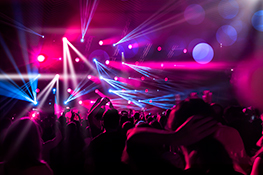The Beginner’s Guide to LED Fresnel Lighting: Setup, Techniques & Best Practices
Understanding the Fresnel Lens: A Powerful Tool for Stage Lighting
The Fresnel lens, with its distinctive stepped design, is a staple in stage lighting. Its unique construction allows for a smooth, adjustable beam, ranging from a tight spot to a broad flood. LED Fresnel lights offer all the advantages of traditional Fresnel fixtures – smooth, variable beam control and soft, even illumination – with the added benefits of energy efficiency, longer lifespan, and cooler operation. This guide will walk you through everything you need to know to master this versatile lighting instrument.
Setting Up Your LED Fresnel: A Step-by-Step Guide
Before you begin, ensure your LED Fresnel is correctly wired and connected to a suitable dimmer pack. Many modern LED Fresnels are DMX controlled, offering precise control over intensity and other functions. Here’s a simple setup process:
- Mounting: Securely mount your LED Fresnel to a lighting stand or truss using appropriate clamps and safety cables. Ensure the fixture is stable and positioned correctly for your intended lighting design.
- Power and DMX Connections: Connect the power cable to a suitable power source and the DMX cable to your lighting console. Always ensure correct polarity and grounding.
- Addressing: Assign a unique DMX address to your LED Fresnel within your lighting console’s address range to control it independently.
- Focus Adjustment: Use the focus knob on the fixture to adjust the beam angle from a tight spot to a wide flood. Experiment to find the optimal beam spread for your needs.
- Color Temperature and Effects (if applicable): Some LED Fresnels offer adjustable color temperature (CCT) and built-in color effects. Familiarize yourself with your fixture’s controls to exploit these features.
Mastering Fresnel Techniques: From Basic to Advanced
The beauty of Fresnel lighting lies in its versatility. Here are some key techniques to explore:
Basic Techniques:
- Key Lighting: Use a Fresnel as your primary light source to illuminate your subject. Position it slightly off-center to create depth and dimension.
- Fill Lighting: Employ a second Fresnel to soften shadows created by the key light. Place it opposite the key light, typically at a lower intensity.
- Back Lighting: Position a Fresnel behind your subject to create separation from the background and add depth.
Advanced Techniques:
- Color Mixing: Using multiple Fresnels with different color gels or LED color mixing capabilities, create dramatic and nuanced lighting schemes.
- Go-bo Projection: Some Fresnels accept gobo inserts, allowing you to project patterns and shapes onto your stage.
- Barn Doors: Utilize barn doors to shape and control the light beam, preventing spill and unwanted light.
Best Practices for LED Fresnel Lighting
- Safety First: Always follow manufacturer’s instructions and safety guidelines. Never touch the lens while the fixture is hot.
- Proper Cooling: Ensure adequate ventilation around your LED Fresnel to prevent overheating.
- Regular Maintenance: Clean the lens regularly to maintain optimal light output and prevent dust buildup.
- Calibration: Regularly calibrate your lighting console and fixtures to ensure accurate color and intensity.
- Experimentation: The best way to master LED Fresnel lighting is to experiment. Try different positions, angles, and intensities to find what works best for your specific needs.
Choosing the Right LED Fresnel for Your Needs
Consider factors like wattage, color temperature range, DMX control, and built-in features when selecting an LED Fresnel. Research different models and read reviews to find the perfect fit for your budget and application.
Conclusion: Unleash the Power of LED Fresnel Lighting
LED Fresnel lighting offers a powerful and versatile tool for stage lighting professionals and enthusiasts alike. By understanding the setup process, mastering key techniques, and following best practices, you can unlock the full potential of this essential lighting instrument. Start experimenting and elevate your stage lighting to the next level.


 Auditorium Construction Services
Auditorium Construction Services 